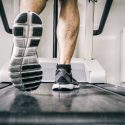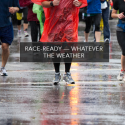Backpack Safety Tips
It’s that time of year again, back to school. While you have much to do to get your child ready for the new school year, don’t neglect the little things that can impact your child’s health. For instance, that backpack your son or daughter lugs each day can weigh 10 pounds or more on occasion. Low back pain isn’t just a problem with older folks. Your child’s back can end up wrenched up too!
The vertebrae in the back act as a natural shock absorber for the body. Place a heavy weight on it, and youra child might compensate, resulting in a shift of the natural curvature of the spine. If a child leans to one side, slouches, arches the back, or bends at the hips because of excess weight, they may develop back, neck, and hip pain.
Here are our tips for a healthy back this backpack season:
Common Safety Concerns:
- One strap: Carrying the bag by one strap may seem like the cool thing to do, but make sure your child wears the backpack with the weight evenly distributed in both shoulder straps. When kids wear it to one side, they can face shoulder, neck, and back pain both in the short term and long term.
- Weighted load: Most doctors recommend that children carry no more than about 10 to 15 percent of their body weight in their back packs. This means you should monitor the weight of the backpack and what’s being carried. Some schools now offer electronic readers instead of textbooks, so there may be options to consider.
- Risk of falls: Carrying a heavy backpack increases a child’s risk for falling. Their balance is compromised. Try to keep backpacks light, packing only the essentials.
When Purchasing a Backpack, Consider:
- Padded back: Most backpacks now have a padded back side, which can help to protect children from sharp objects, such as pens and scissors, that may poke out of pockets and compartments.
- Backpack on wheels: A backpack on wheels can remove the danger of lugging pounds of added weight completely. Some schools do not allow them and if you live in an area with snow, this can be a challenge in winter.
- Added waist belt: In recent years more and more backpacks now have waist belts. This added belt can help transfer weight from the back to the hips for added comfort. It’s important that if your child has one to make sure it fits properly; otherwise, it can add strain if the straps are in the wrong place.
- Wide shoulder straps: When the shoulder straps are an incorrect size, they can contribute to issues like numbness, tingling, and weakness in the arms and hands, especially if the straps are too narrow. Look for a backpack with a wider straps.
- Backpack safety card: The Centers for Disease Control recommends that parents make an emergency card for their child that has important information such as name, school, medications, allergies, parent contact information, and any other important facts. It’s also recommended to laminate the card given the wear and tear a child puts a backpack through. Print a premade emergency cardfrom the CDC or visit Save the Children for a digital version.
Talk to Your Child:
- Frequent locker visits: If possible, encourage your child to make frequent stops at their locker to drop off heavy items between classes.
- Pack only essentials: Talk to your child about carrying only necessary items in their backpack. For example, if a laptop is not a must-have, consider leaving it at home. The same with smartphones, tablets, and other electronics that add weight.
- Use all compartments: Using the many compartments in the backpack will help distribute weight throughout the pack. Talk to your child about placing heavier items in the back and the lighter items in the smaller and front compartments.
For School Administrators:
- Time: Consider allowing more time between classes to stop back at lockers and reduce the heavy load.
- EBooks: Many schools are using electronic books and books on CD-ROM. This eliminates challenges with heavy books altogether.
- Talk to students: Have conversations with students about safe backpack use and advise teachers on how to spot a child having challenges.
Signs Your Child Has Challenges:
- Back, shoulder, or neck pain
- Trouble getting the pack on and off
- Slouched posture when wearing the pack
References:
Centers for Disease Control and Prevention: http://blogs.cdc.gov/publichealthmatters/2015/08/back-to-school-be-prepared/
U.S. National Library of Medicine: https://medlineplus.gov/childsafety.html
The American Academy of Pediatrics: https://www.aap.org




